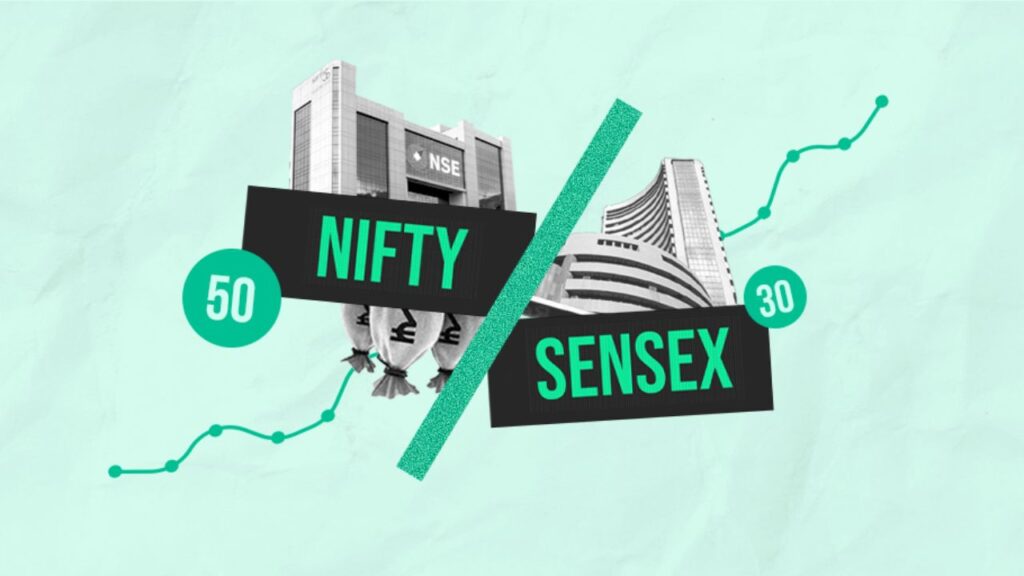
India’s benchmark equity indices, the Nifty 50 and Sensex, have recently touched record highs, capturing the attention of investors, analysts, and economists alike. This surge is not an isolated incident but rather the result of a confluence of economic, political, and global factors.
In this article, we explore the key reasons behind this powerful rally and what it could mean for the Indian stock market going forward.
Strong Domestic Economic Indicators
One of the biggest drivers of the current rally is the strong performance of the Indian economy. Key indicators such as GDP growth, industrial output, and manufacturing data have all shown signs of resilience.
India’s GDP growth has outpaced expectations in recent quarters, supported by strong domestic demand, increased government spending, and robust exports.
The Purchasing Managers’ Index (PMI) for manufacturing and services has remained in expansionary territory, signaling positive business sentiment.
Additionally, consumer confidence has shown signs of improvement, with rural and urban demand gradually recovering from the disruptions caused by the pandemic and inflationary pressures.
Supportive Monetary Policy by the Reserve Bank of India
The Reserve Bank of India (RBI) has played a pivotal role in supporting the markets. Although it has maintained a cautious approach to interest rates due to concerns about inflation, its overall policy stance has remained accommodative.
Ample liquidity in the banking system and efforts to maintain financial stability have contributed to a favorable environment for equities.
Furthermore, the RBI’s continued focus on inflation targeting while also supporting growth has reassured investors that monetary policy will remain balanced.
This has particularly benefited interest-rate sensitive sectors such as banking, real estate, and automobiles, which have seen renewed investor interest.
Robust Corporate Earnings
Corporate earnings have also played a major role in propelling the markets higher. Many blue-chip companies listed on the Nifty 50 and Sensex have reported better-than-expected quarterly results.
Sectors such as information technology, banking, and consumer goods have shown strong earnings growth, driven by higher sales, improved margins, and operational efficiencies.
The banking sector, in particular, has seen a strong revival, with lower non-performing assets and improved credit growth. As a result, banking stocks have been among the top contributors to the index rally.
Political Stability and Policy Continuity
Political stability has always been a crucial factor in investor sentiment. With a stable government at the center and expectations of policy continuity, domestic and foreign investors have shown increased confidence in India’s long-term growth story.
Recent reforms in sectors such as infrastructure, digital economy, and renewable energy have further reinforced the bullish sentiment.
Government initiatives such as increased capital expenditure, production-linked incentive (PLI) schemes, and digital infrastructure development are seen as key enablers for future growth. These policies have helped attract investments across sectors and boosted the outlook for corporate profitability.
Foreign Institutional Investor (FII) Inflows
Foreign Institutional Investors have returned to Indian equities after a brief period of outflows. Improved global risk appetite, India’s strong macroeconomic fundamentals, and a relatively stable currency have made the country an attractive investment destination once again.
As the US Federal Reserve and other central banks adopt a more balanced approach to interest rate hikes, capital flows into emerging markets like India have resumed. This has added significant liquidity to Indian markets, supporting the upward momentum in stock prices.
Technical Breakouts and Market Sentiment
From a technical perspective, both the Nifty 50 and Sensex have seen important resistance levels being breached. These technical breakouts have triggered algorithmic and momentum-based buying, adding fuel to the rally.
Investor sentiment remains broadly optimistic, as indicated by low volatility indices and strong market breadth. Retail participation has also increased significantly, with more individual investors entering the market through mutual funds, direct equity investments, and SIPs (systematic investment plans).
Global Factors
Global economic conditions have also contributed to the rally. With recession fears easing in developed markets and commodity prices stabilizing, investor confidence has improved worldwide.
India, with its large domestic market, growing digital economy, and relatively low external debt, is perceived as one of the more resilient emerging markets.
In addition, geopolitical tensions and supply chain disruptions have prompted global companies to diversify away from China. India is seen as a key beneficiary of this shift, especially in sectors like electronics manufacturing, pharmaceuticals, and semiconductors.
Sectoral Performance and Leadership
The rally has been broad-based, with multiple sectors contributing to the gains. The banking and financial services sector has led the charge, supported by strong credit growth and improving asset quality. Information technology companies have benefited from increased digital transformation and strong global demand.
The infrastructure and capital goods sectors have gained on the back of higher government spending, while consumer goods companies have shown resilience amid inflation.
Real estate and auto stocks have also seen renewed investor interest due to lower interest rates and rising urban demand.
Conclusion
The recent highs in the Nifty 50 and Sensex are not merely a product of short-term speculation. They reflect genuine improvements in economic fundamentals, strong corporate performance, and a favorable macroeconomic environment.
While valuations in some sectors are beginning to look stretched, the overall outlook remains positive, especially if global conditions remain stable and domestic policy support continues.
Investors should remain cautious of potential volatility but also recognize the strong underpinnings of the current rally. Diversification, disciplined investing, and a long-term perspective will be key to navigating the next phase of the Indian equity market.
